Search
Search Results

Video
Ancient Celtic History, Origin and Culture
The Ancient Celtic people were never a unified empire, but were individual and complex tribes that shared the Celtic language, and through the trade of goods and ideas, shared similarities in art, warfare, religion and burial practices. The...

Image
Celtic Pottery Vessel
A Celtic pottery vessel from La Marne, France. It shows typical Celtic design features with its curvilinear shape and motifs in black on a red background. 4th century BCE. Height: 30 cm. (British Museum, London)
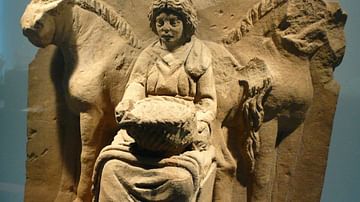
Article
Epona
Epona was a Celtic goddess. Her name contains an allusion to the horse: in Celtic, "epos" means “horse” and the suffix “-ona” affixed simply means “on”. Epona is the patron goddess of mares and foals. The oldest information about the Gallic...
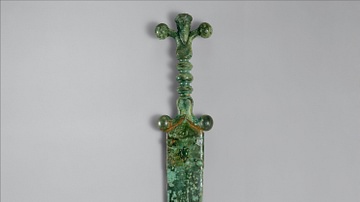
Image
Anthropomorphic Celtic Sword
A Celtic sword and its scabbard (now amalgamated) from c. 60 BCE, associated with the La Tene culture. The sword's hilt is decorated with the head of a warrior, geometrically reduced like many other examples of Celtic art. The sword and its...
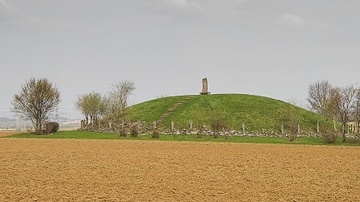
Image
Reconstruction of the Celtic Hochdorf Burial Mound
A reconstruction of the Celtic Hochdorf burial mound located near Baden-Württemberg in southwest Germany. The burial within a wooden chamber of a single male dates to the second half of the 6th century BCE.
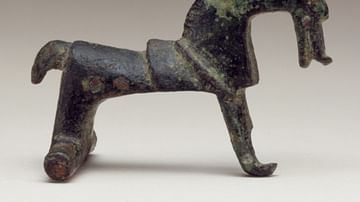
Image
Celtic Horse Brooch
This small bronze brooch was made in Central Europe sometime between 650 and 550 BCE. This horse-shaped pin is one of many examples of Celtic animal brooches from Central Europe. From the Metropolitan Museum of Art, New York.
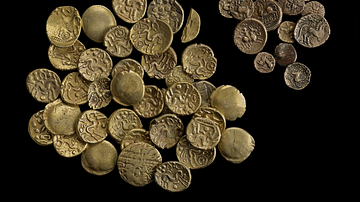
Image
Essendon Celtic Coin Hoard
A number of the gold coins found in the Celtic Essendon hoard from Hertfordshire, England. The hoard dates to the period c. 60 BCE to 40 CE. It is likely the coins were buried as a votive offering as the hoard was added to over a period of...
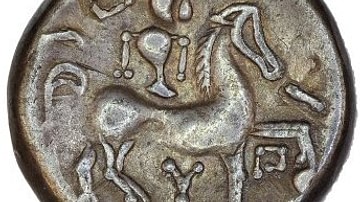
Image
Celtic Coin Depicting Horse & Rider
The reverse of a 2nd Century - 1st Century BCE Celtic silver coin from Central Europe, specifically what is now the Czech Republic. The reverse of this coin depicts a horse and rider in stylized geometric forms. From the British Museum in...

Definition
Wheel of the Year
The Wheel of the Year is a symbol of the eight Sabbats (religious festivals) of Neo-Paganism and the Wicca movement which includes four solar festivals - Winter Solstice, Spring Equinox, Summer Solstice, Fall Equinox - and four seasonal festivals...
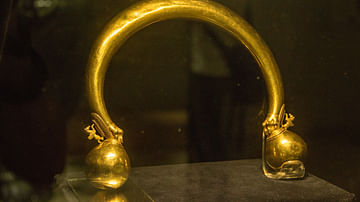
Image
Celtic Torc, Vix Burial
A gold neck torc from the Celtic Vix burial, Châtillon-sur-Seine, in northeast France close to a fortified Celtic site or oppidum and in the vicinity of at least four more burials. Discovered undisturbed, the princely burial dates to the...